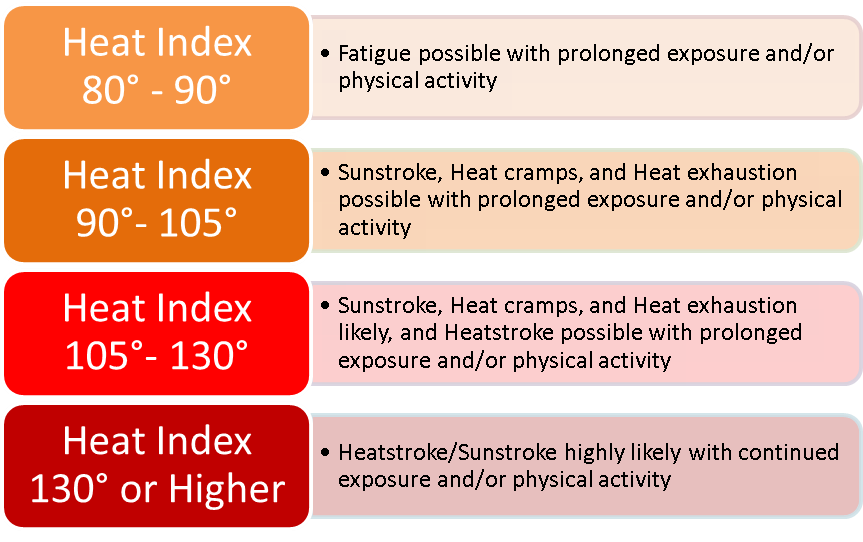 Extreme heat causes more than 600 deaths a year, according to the National Center for Environmental Health. Altogether, that is more than tornadoes, hurricanes, floods, and lightning combined.
Extreme heat causes more than 600 deaths a year, according to the National Center for Environmental Health. Altogether, that is more than tornadoes, hurricanes, floods, and lightning combined.
Heat kills by pushing the human body beyond its limits. In extreme heat and high humidity, evaporation is slowed and the body must work extra hard to maintain a normal temperature.
Things to do During Extreme Heat:
- Never leave children or pets alone in closed vehicles.
- Stay indoors as much as possible and limit exposure to the sun.
- Stay on the lowest floor out of the sunshine if air conditioning is not available.
- Postpone outdoor games and activities.
- Consider spending the warmest part of the day in public buildings such as libraries, schools, movie theaters, shopping malls, and other community facilities. Circulating air can cool the body by increasing the perspiration rate of evaporation.
- Eat well-balanced, light, and regular meals. Avoid using salt tablets unless directed to do so by a physician.
- Drink plenty of water; even if you do not feel thirsty. Avoid drinks with caffeine.
- Limit intake of alcoholic beverages.
- Dress in loose-fitting, lightweight, and light-colored clothes that cover as much skin as possible. Avoid dark colors because they absorb the sun’s rays.
- Protect face and head by wearing a wide-brimmed hat.
- Avoid strenuous work during the warmest part of the day. Use a buddy system when working in extreme heat, and take frequent breaks.
- Check on family, friends, and neighbors who do not have air conditioning and who spend much of their time alone.
- Avoid extreme temperature changes.
Most heat disorders occur because the victim has been overexposed to heat or has over-exercised for his or her age and physical condition. Older adults, young children and those who are sick or overweight are more likely to succumb to extreme heat.
*National Weather Service has devised the “Heat Index” (HI).. The HI, given in degrees F, is an accurate measure of how hot it really feels when relative humidity (RH) is added to the actual air temperature.
Heat Index/Heat Disorders: Possible heat disorders for people in higher risk groups which include, older adults, young children and those who are sick or overweight
The “Heat Index vs. Heat Disorder” table (next to the HI chart) relates ranges of HI with specific disorders, particularly for people in higher risk groups. Since HI values were devised for shady, light wind conditions, EXPOSURE TO FULL SUNSHINE CAN INCREASE HI VALUES BY UP TO 15°F. Also, STRONG WINDS, PARTICULARLY WITH VERY HOT, DRY AIR, CAN BE EXTREMELY HAZARDOUS. From www.nws.noaa.gove/brochures/heat_waves
EXTREME HEAT SAFETY more info from FEMA

